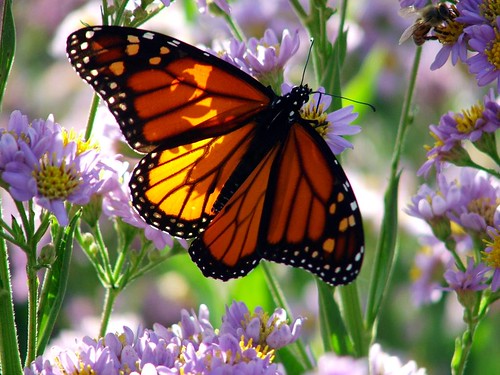Slow Shutter Speed:

1) Cheetah - The shutter speed of this photograph is fairly slow (although not as slow as it could be), allowing the movement of the cheetah's legs to be caught in a blur while the background slips by in a whirl. This artfully conveys the incredible speed at which the cheetah plunges across the field in pursuit of its prey. Note that the technique of panning was applied to keep the cheetah relatively in focus. (Estimated shutter speed: 1/30)

2) Volcano and electrical storm - A long exposure was necessary to capture the lightning in this image (which is unpredictable and not necessarily frequent). While the lightning looks fairly sharp, the sporadic trails of the embers from the volcano trace across the dark parts of the ash clouds, indicating that several seconds (if not minutes) passed while the photograph was taken. However, the cloud appears solid and sharply formed, which means that not too much time passed; otherwise, the gray ash would be smeared and blurred. (Estimated shutter speed: several seconds (bulb setting?))

3) Wildfire near the city - This photograph too was subject to a long exposure time, possibly even an hour or so long, as is evident by the trail created by the cars lights and taillights on the highway. The indistinct red-orange glow indicates the fickle nature of the flame, which does not rest in one place but leaps about in an unrestricted, undefined area. (Estimated shutter speed: bulb exposure)
Fast Shutter Speed:

1) Hummingbird - A human eye can only see a hummingbird's wings as a metallic blur; however, this image employs fast shutter speed to freeze the tiny creature in motion, outlining its wings in near perfect detail. (Estimated shutter speed: 1/500)

2) Hawk - Birds in flight are constantly making tiny adjustments to their wings, shifting their feathers, or changing position and angling, which makes it necessary to use a fast shutter speed to freeze them against the sky. This hawk appears to be poised on the brink of a dive, but its features are clear and sharp. (Estimated shutter speed: 1/1000)

3) Raptor - This bird of prey is similarly in mid-wingbeat, lifting powerfully up from the ground after grasping its catch firmly in its claws. That power is perfectly captured with the fast shutter speed, holding it in a single moment before the raptor flies off. (Estimated shutter speed: 1/1000)
Photos courtesy of National Geographic





























